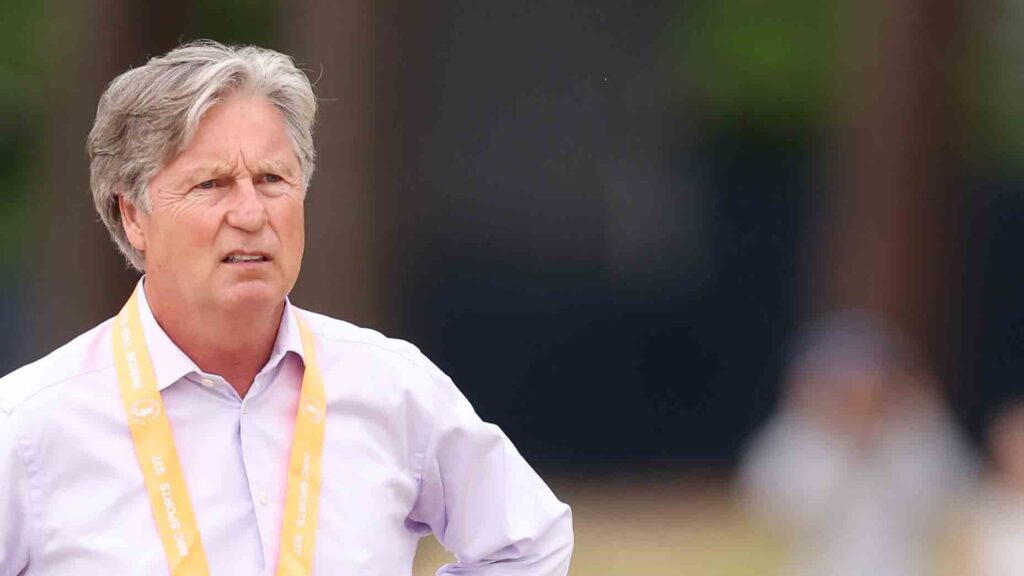In a recent social media post, Brandel Chamblee criticized the TV ratings of LIV Golf, a Saudi-backed golf tour, referring to it as being in the “witness protection program of sports viewership.” This comment came in response to reports that the CW Network broadcast of LIV’s season-ending championship had low viewership numbers for the final rounds.
Chamblee, a Golf Channel analyst known for his outspoken opinions, highlighted the challenges faced by LIV Golf in attracting viewers despite the significant investment in top golfers and events. He pointed out issues with the lack of innovation in their ideas and the origin of their funding, suggesting that these factors contribute to their struggles in capturing a larger audience.
The comparison was made to the PGA Tour, where Chamblee noted that while viewership numbers have declined, the tour retains a strong commercial property image based on its charitable contributions and popularity among sponsors and advertisers. He acknowledged that innovation is essential for the future of golf broadcasting but highlighted the positive aspects of the PGA Tour’s brand and demographic appeal.
Recent TV ratings for both the PGA Tour and LIV Golf have been a cause for concern, with declines in viewership reported for both tours. Factors contributing to the drop in ratings include competition from other sports events like the NFL, changes in broadcasting platforms, and the quality of the players competing in the events.
Despite these challenges, there is optimism surrounding the ongoing negotiations between the PGA Tour and LIV Golf, facilitated by the Saudi Arabia Public Investment Fund. Golfers like Rory McIlroy have expressed hope for a resolution in the discussions, as key decision-makers appear to be aligned in their goals. The complexity of the negotiations, however, means that a deal may still take time to materialize.
In conclusion, the TV ratings for both the PGA Tour and LIV Golf continue to be a topic of discussion within the golf community. While challenges persist in attracting viewers to golf broadcasts, there is optimism for the future as the tours explore innovative solutions and work towards a potential partnership. The evolving landscape of sports broadcasting and the competitive nature of the industry will require strategic planning and adaptation to ensure the continued success of professional golf tours.


